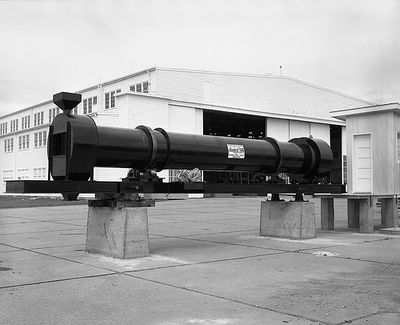Direct Reduced Iron
Direct-reduced iron (DRI) is a metallic material formed by the reduction (removal of oxygen) of iron oxide (iron ore) at temperatures below the melting point of iron. DRI is produced by the use of a reducing gas (mostly a mixture of hydrogen and carbon monoxide). The temperatures for this process are significantly lower than those in a blast furnace, and capital requirements are also lower. DRI may have a sponge-like structure, leading to the alternative name "sponge iron".
Suitable starting materials are very high-grade iron ores (70% iron content and up) or rusted scrap steel, which is mostly iron. These could not yet be used in an induction furnace, as the reduction is a chemical reaction while induction only melts the already-reduced pure metal. India is one of the global leaders in sponge iron production, having numerous small or medium-sized facilities. DRI is commonly manufactured in a rotary kiln.
HDRI ("hot direct reduced iron"): when the still-hot iron is immediately moved for melting into an electric arc furnace or induction furnace, to save energy. Caution: when HDRI is exposed to air, it may rapidly oxidize (=explode!).
Product ecology
- first, metal oxides would be extracted from clay, possibly by using hydrofluoric acid
- reduction of metals could also be accomplished in a solar carbothermic manner (see metal refining for details)
- Induction furnace -- could be fed with HDRI for energy-efficient steel production (rapid melting because metal is already hot)
- Gasifier -- to create the reducing gas: syngas, a mixture of H and CO
- Biogas -- methane from biogas can be turned into the H/CO mix. Globally, fossil gas (a.k.a. "natural" gas) is the most commonly used fuel for DRI, therefore biogas is a possible replacement, although it may have to be upgraded first (often contains sulfur compounds, likely a problem; abundant CO2 in biogas limits energy yield).
- Biochar -- is a charcoal-like soil amendment. It is resistant to biodegradation, i.e. it is carbon that has been permanently removed from the atmosphere. The syngas that is released during pyrolysis could be used to make DRI. If these processes are combined, with biochar as a by-product, the whole process can become carbon negative (carbon re-fossilization). Biochar could be co-composted with spent slurry from a biogas digester, generating an excellent soil amendment.
- Waste heat -- The DRI process generates waste heat that can potentially be used for pyrolyzing further biomass (pyrolysis = heating in absence of oxygen). Pyrolysis releases yet more syngas which can be fed back into the process. Everything is thus powered by biomass, generating biochar. In cold climates, any kind of waste heat can obviously be useful for heating winter greenhouses.
Further information is needed !
- Is this actually feasible on the small scale?
- Sure
- Does the process take place at normal atmospheric pressure?
- Yes, it can
- Can a rotary kiln be designed for the village scale?
- Yes, but this does not have to take place in rotary kiln; the only thing that matters is good mixing.
- Are sufficient amounts of high-grade ores or rusted steel available?
- It doesn't matter. If we get the metal extraction from clays working, then we can concentrate most clays into high-grade ores.
- Scalability is feasible, but efficiency may not be as good. The processes of the largest plants can also be done on a table top. The question is - at what point does it still make sense to do so? If we have access to abundant energy, feasibility may occur at a village scale (added: CSP can serve as heat source; needs methane atmosphere).
This appears to be a good alternative for smaller scale, lower-cost process, worth adding to our general awareness.
Other Metals
- paper: Carbothermal reduction of alumina: Thermochemical equilibrium calculations and experimental investigation
- paper: Mechanism of carbothermal reduction of iron, cobalt, nickel and copper oxides
See Also
External links
- Wikipedia: Direct reduced iron
- Wikipedia: Sponge iron reaction
- Wikipedia: Water gas shift -> a way to increase the hydrogen content in syngas
- WW2-era (1942) TIME Magazine article on sponge iron
